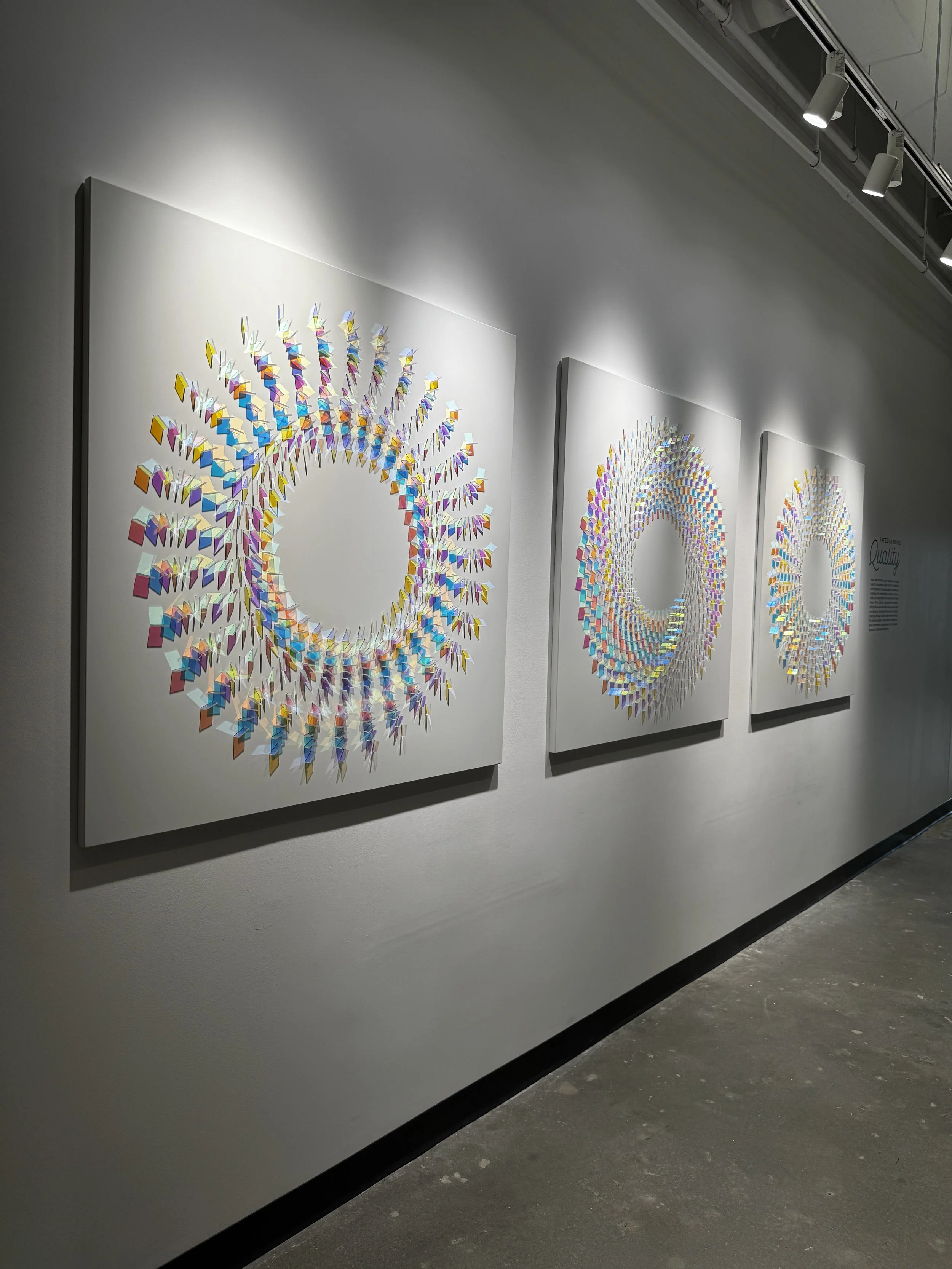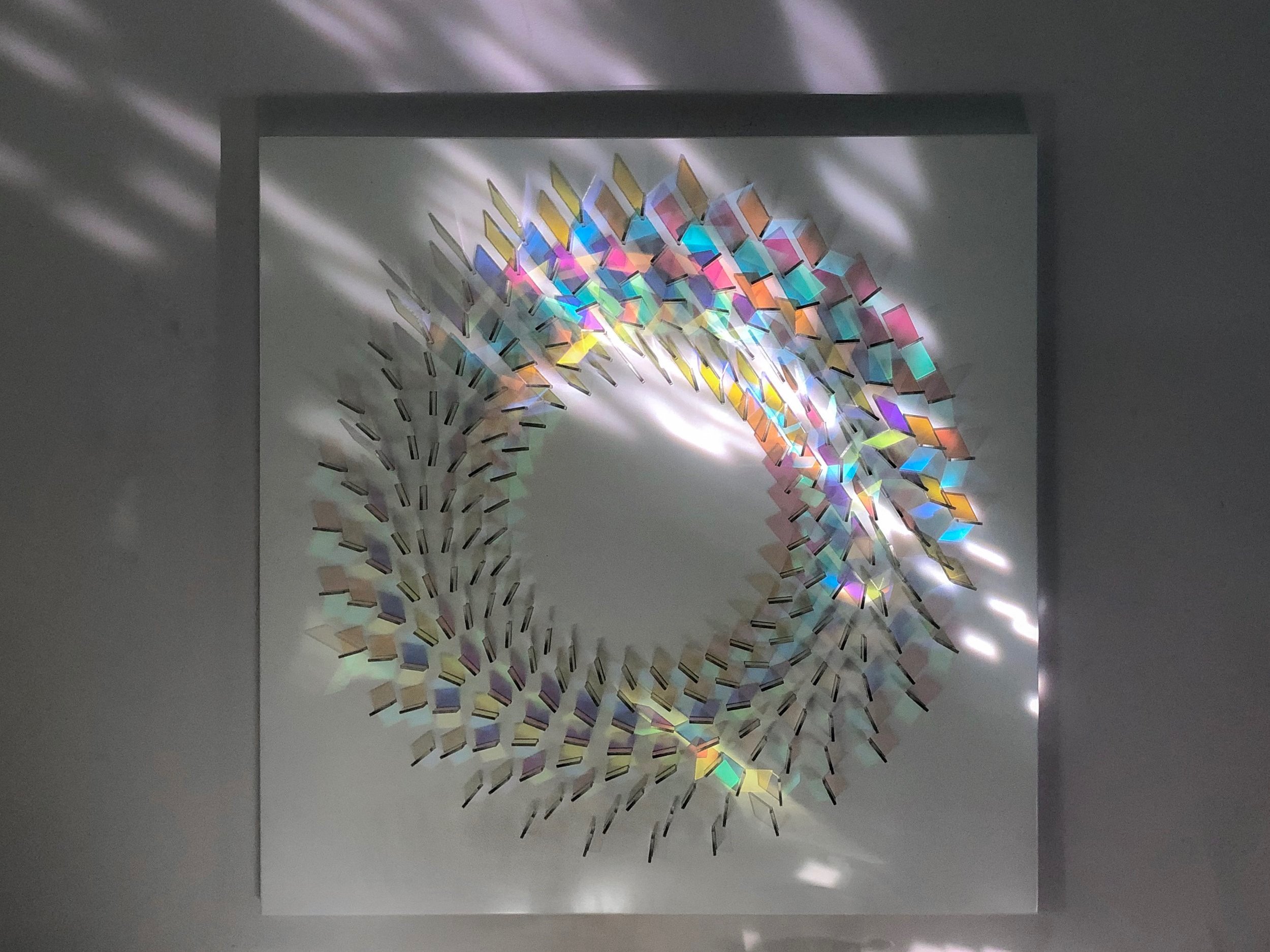Artificial Light
“ Your artwork provides endless joy for my kids, who love play ‘magicians’ by moving the lights around to reveal the colours ”
The Benefits of
Artificial Light
We wish the sun could stick around for longer, but unfortunately it does appear to be a little inconsistent. For that ‘wow’ factor at all times of the day, at the flick of a switch, strategic lighting is the answer!
Our artworks are playfully responsive and offer a range of visual effects, all dependent on the angle and intensity of the light source. With artificial lighting you are in control.
By experimenting with the placement and angles of the light source, you can create different effects each day.
Light Study
It’s important to get a good understanding of what light currently exists in your space.
When lighting the piece with artificial light, it is important to avoid excessive ambient light, either from existing overhead lighting or natural daylight filling the space. This will interfere with the intended effects of the additional lighting you are setting up, resulting in muted or even completely erased colours.
These artworks reveal their true potential when showcased in controlled lighting environments. To achieve this, locate a darker section of your space that is free from any excess light.

At night, try turning off all your overhead lighting in the room and use a torch to play with the effects for yourself. This will help you understand the conditions needed to achieve the best results.
The Perfect Light
For the most vibrant concentration of colour, we recommend strong directional spotlights. The key word here is ‘spot’ – a focused beam that creates a clear, defined shadow.
Spotlights come in a range of sizes and styles. The wider the beam, the more area is covered. A wide beam, however, doesn’t mean more light; it just refers to the distance the light has to spread over, which may cause more diffusion of colour, dependent on the size of the artwork.
We recommend a simple angle-poise or floor lamp spotlight for our smaller/modular works. And bar/track lighting for larger pieces. You don’t have to spend a lot of money; there are plenty of brands online selling at affordable prices.
The Perfect Angle
Another important thing to consider is the angle at which the light is falling on the artwork. The light source needs to be at an angle to the dichroic elements. This will allow the light to pass directly through the material to produce the longer projections of colour, as shown in the images above.
Remember, head-on light won’t pass through the dichroic elements and therefore will not achieve the projections of colour.
There are many ways to light the work using spotlights, either with one or two beams. To maximise coverage on a large piece, position two spotlights at the top corners and angle them towards the opposite bottom corners – this stretches the light across the full span of the artwork.
Wall Wash Lighting
To achieve more subtle effects, an alternative option to consider is soft wall wash lighting, such as overhead strip lights. It is important to note, however, that the effectiveness of this lighting choice depends heavily on the design of the artwork. For wall wash lighting the dichroic pieces will need to be positioned horizontally rather than vertically to allow the material to respond to the light falling on the artwork from above.
The beauty of these softer effects is the seamless blending of colours, creating beautiful gradients that emit a radiant glow from the panel.









